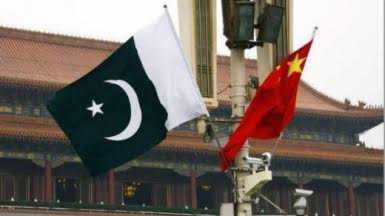 Photo source: iStock
Photo source: iStockTribune News Service
New Delhi, March 31
With the passage of Finance Bill, a host of tax measures and changes will kick in from April 1, including a new Income Tax Return (ITR) form, lower returns from small savings schemes and a cap on cash transactions exceeding Rs 2 lakh.The Central Board of Direct Taxes has notified new Income Tax Returns (ITRs) forms for assessment year 2017-18. A key change in the notified forms is the one-page simplified ITR Form-1 (Sahaj). It can be filed by an individual having income up to Rs 50 lakh from salary, one-house property or income from interest or other sources. This initiative will benefit over two crore taxpayers.(Follow The Tribune on Facebook; and Twitter @thetribunechd)Parts relating to tax computation and deductions have been rationalised and simplified, reducing the compliance burden to a significant extent on the individual taxpayer.Sahaj makes quoting of the 12-digit biometric Aadhaar number mandatory along with Permanent Account Number (PAN). It also seeks details of cash in excess of Rs 2 lakh deposited in bank accounts during the post-demonetisation window — between November 9 and December 30, 2016. The last date for filing of ITRs for 2017-18 is July 31.From April 1, small savings will fetch lower returns as the government has lowered interest rates on small savings schemes such as Public Provident Fund, Kisan Vikas Patra and Sukanya Samriddhi scheme by 0.1 per cent for the April-June quarter. However, interest on savings deposits has been retained at 4 per cent annually. A Finance Ministry notification said investments in the PPF scheme will fetch a lower annual rate of 7.9 per cent, the same as five-year National Savings Certificate. The existing rate for these two schemes is 8 per cent.Among the tax changes, Aadhaar number has to be quoted from July 1, 2017, in the return of income. Anyone allotted PAN as on July 1 must list the Aadhaar number to the tax authority, failing which, PAN allotted to such person shall be deemed to be invalid. As per the Finance Bill changes, no one can receive more than Rs 2 lakh in cash.
Disclose deposits over Rs 2L post-note ban
- Taxpayers who deposited Rs 2 lakh or more in banks post-demonetisation will have to make the disclosure in the new ITR form. Column Part-E of ITR Form-1 (Sahaj) seeks information on cash deposits made by the assessee between November 9 and December 30, 2016 for “aggregate cash deposits” of Rs 2 lakh or more.
Returns simplified for 20 m taxpayers
CURBING EVASION Individuals need to make more disclosures in the onepage form, including linking of tax returns with Aadhaar
THE DEPARTMENT HAS MANDATED THAT TAXPAYERS WILL HAVE TO DISCLOSE ANY CASH DEPOSIT ABOVE ₹2 LAKH MADE DURING NOV 9 AND DEC 30
From page 01 NEW DELHI: The income-tax department has notified a simplified one-page tax-return form aimed at making it easier for taxpayers to file their annual returns.
 HT/FILEPeople queue up to file their returns. There are around 40 million taxpayers in India
HT/FILEPeople queue up to file their returns. There are around 40 million taxpayers in India
At the same time, the new form also requires taxpayers to make additional disclosures —including mandatory linking of tax returns with an individual’s Aadhaar number — which will help curb tax evasion.
Not only will this make it easier for 50% of the country’s 40 million taxpayers and encourage more people to file their tax returns, the new disclosures will also encourage better compliance.
A press release issued by the tax department says individuals earning up to ₹50 lakh and possessing one house will need to file only a single-page tax return form called ITR-1 (Sahaj) for financial year 2016-17.
However, the department has mandated that the taxpayer will have to disclose any cash deposit above ₹2 lakh made during November 9 and December 30 as it moves to track instances where high-value cash deposits post-demonetisation do not match with the income profile of the taxpayer.
Further, in line with the changes proposed to the incometax Act, providing the Aadhaar number or the Aadhaar enrolment number in the I-T return form has been made mandatory.
The tax department has also rationalised various columns relating to tax computation and deductions for easy compliance.
“This will reduce the compliance burden to a significant extent on the individual taxpayer. This initiative will benefit more than two crore taxpayers who will be eligible to file their return of income in this simplified form,” said the income-tax department in a statement.
However, taxpayers who have more than one house will have to file a much more detailed ITR-2.
The number of income-tax return forms have also been reduced from the existing nine to seven. Further, only those individuals above the age of 80 years or whose income does not exceed ₹5 lakh and have not claimed any refund of income tax will be able to file paper returns.
Earlier, taxpayers filing ITR-1 and ITR-2 could file paper returns and claim a refund.
Also, the tax department has now made it mandatory to report exempted long-term capital gains in the tax return form; dividend income also has to be disclosed. “The government has shifted focus to those earning upwards of ₹50 lakh and having income from sources other than salary with multiple home ownership. Income-tax return filing will be detailed for them. Besides, the government has kept up the momentum on efforts of demonetisation,” said Archit Gupta, founder and CEO of ClearTax, a website which helps people file tax returns.
Around 37 million people filed their income-tax returns in 2015-16, of which 9.9 million reported annual income below the exemption limit of ₹2.5 lakh, 19.5 million reported an annual income between ₹2.5 lakh and ₹5 lakh, 5.2 million showed income between ₹5 lakh and ₹10 lakh and only 2.4 million people showed income above ₹10 lakh, according to the tax department.
Further, only 172,000 people reported income above ₹50 lakh in the entire country. A majority of the individual assessees reporting income above ₹5 lakh were from the salaried class.
Small savings schemes to fetch less interest now; what it means for you
NEW DELHI: The government on Friday slashed interest rates on small savings schemes, including Public provident Fund (PPF) and Kisan Vikas Patra (KVP), by 10 basis points to align them with market rates, a move that may facilitate further rate cuts by commercial banks in the absence of policy rate cuts by the Reserve Bank of India (RBI).
A basis point is one-hundredth of a percentage point.
RBI is expected to hold rates in its quarterly monetary policy review on April 6. The central bank in its last policy review in February changed its stance to neutral from accommodative, citing inflationary pressure. However, the linking of interest rates of small savings schemes to the yields of government bonds is expected to allow banks to pass on policy rate cuts by the central bank through lower lending rates.
“We are doing it keeping in mind the interests of small investors,” economic affairs secretary Shaktikanta Das said.
So, should you rethink your investments in these schemes?
RATE CUTS
According to the finance ministry notification, the interest rate on a savings accounts with post offices will stay at 4% annually, whereas all other schemes will fetch 0.10% less starting next quarter. Investments in PPF will fetch an annual interest rate of 7.9%, compared to 8% in the quarter ending March 2017; similarly five-year National Savings Certificate will give interest of 7.9% instead of 8%. KVP investments will now provide 7.6% return and mature in 113 months.
The scheme for the girl child, Sukanya Samriddhi Account Scheme, and five-year Senior Citizens Savings Scheme will provide 8.4% return. The five-year monthly income scheme will offer 7.6% returns. Term deposits of 1-5 years will offer 6.9-7.7%. The five-year recurring deposit will earn 7.2% interest.
SHOULD YOU KEEP INVESTING?
“0.10% decrease in the interest rate of PPF is not huge in the current falling interest rate scenario. Given that PPF still offer a return of 7.9%, that too tax free, which no other instrument provide, one can continue investing in it,” said Suresh Sadagopan, founder, Ladder7 Financial Advisories, a Mumbai-based financial planner.
However, when it comes to other small savings schemes such as time deposits, where returns are not only low but are taxable too, “one should look for alternatives,” Sadagopan suggested.
“An investor can consider investing in a debt mutual fund instead, if the time horizon for investment is more than three years. Though debt mutual funds will also provide similar returns, but available indexation benefit while calculating tax on return will increase the investor’s overall profit.”






























































 HT/FILE
HT/FILE






























































